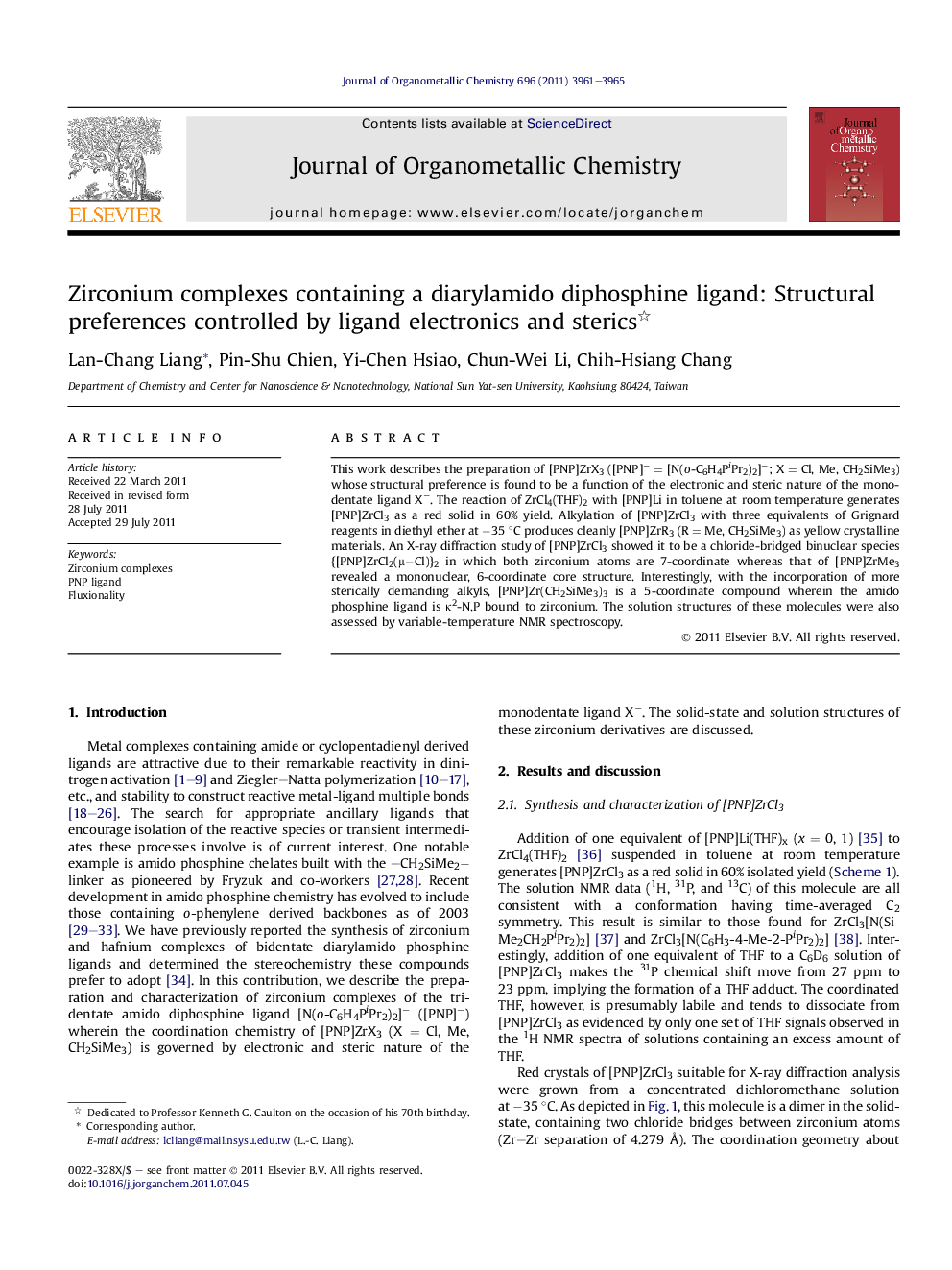| Article ID | Journal | Published Year | Pages | File Type |
|---|---|---|---|---|
| 1323596 | Journal of Organometallic Chemistry | 2011 | 5 Pages |
This work describes the preparation of [PNP]ZrX3 ([PNP]− = [N(o-C6H4PiPr2)2]−; X = Cl, Me, CH2SiMe3) whose structural preference is found to be a function of the electronic and steric nature of the monodentate ligand X−. The reaction of ZrCl4(THF)2 with [PNP]Li in toluene at room temperature generates [PNP]ZrCl3 as a red solid in 60% yield. Alkylation of [PNP]ZrCl3 with three equivalents of Grignard reagents in diethyl ether at −35 °C produces cleanly [PNP]ZrR3 (R = Me, CH2SiMe3) as yellow crystalline materials. An X-ray diffraction study of [PNP]ZrCl3 showed it to be a chloride-bridged binuclear species {[PNP]ZrCl2(μ−Cl)}2 in which both zirconium atoms are 7-coordinate whereas that of [PNP]ZrMe3 revealed a mononuclear, 6-coordinate core structure. Interestingly, with the incorporation of more sterically demanding alkyls, [PNP]Zr(CH2SiMe3)3 is a 5-coordinate compound wherein the amido phosphine ligand is κ2-N,P bound to zirconium. The solution structures of these molecules were also assessed by variable-temperature NMR spectroscopy.
Graphical abstractThe solid-state structures of [PNP]ZrX3 ([PNP]− = [N(o-C6H4PiPr2)2]−; X = Cl, Me, CH2SiMe3) have been established by X-ray diffraction analysis. While the chloride complex is a 7-coordinate, chloride-bridged dimer, [PNP]ZrMe3 and [PNP]Zr(CH2SiMe3)3 are 6- and 5-coordinate, respectively.Figure optionsDownload full-size imageDownload as PowerPoint slideHighlights► Syntheses and structures of zirconium trichloride and trialkyl complexes of a diarylamido diphosphine ligand. ► Distinct coordination number governed by chloride or alkyl ligands involved. ► Activation parameters for the fluxional process of trialkyl complexes.
